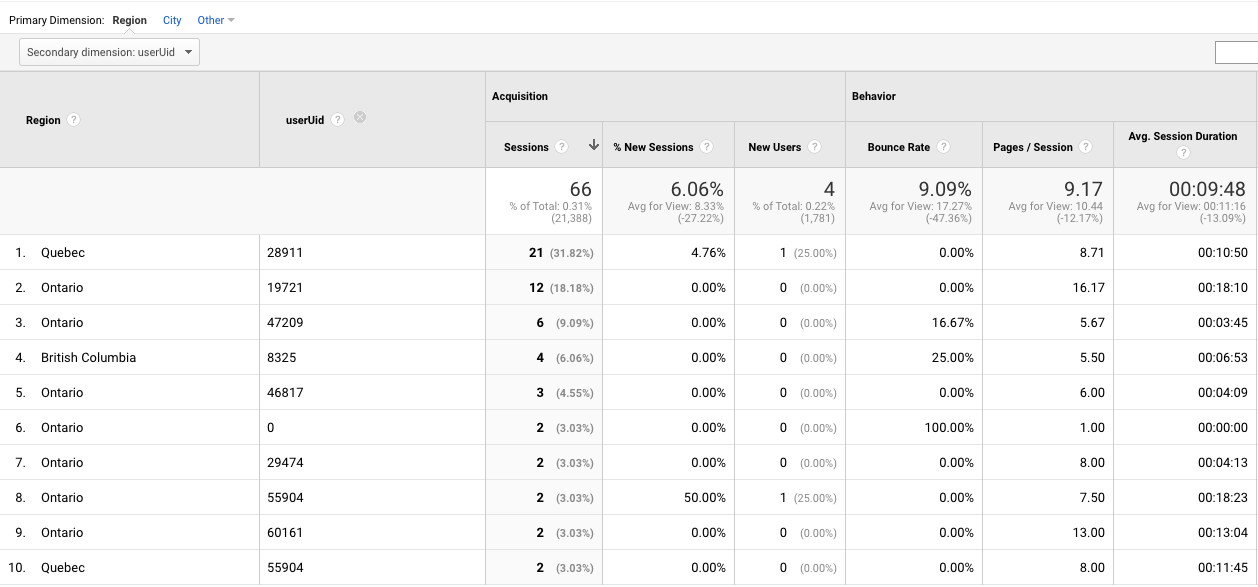A Comprehensive Guide to 'Secondary Dimensions' in Google Analytics: Insights Revealed
A Comprehensive Guide to 'Secondary Dimensions' in Google Analytics: Insights Revealed
Blog Article
Navigating the Depths of Secondary Dimension in Google Analytics: A Detailed Expedition on Its Capability
Secondary measurements, though relatively uncomplicated at initial glance, harbor a wealth of untapped prospective waiting to be used. As we embark on this trip to discover the nuanced performance of additional dimensions, we will discover just how this feature can light up patterns, reveal correlations, and inevitably pave the method for informed decision-making in the digital landscape (what is a “secondary dimension” in google analytics?).
Comprehending Additional Measurements in Google Analytics

Comprehending exactly how secondary dimensions job is essential for leveraging the complete power of Google Analytics. By incorporating main metrics with second dimensions, you can gain useful insights that drive notified decision-making and optimization techniques.
Leveraging Secondary Dimensions for Information Analysis
Building upon the fundamental understanding of how additional measurements improve data analysis in Google Analytics, the usage of these additional layers of details comes to be extremely important in removing beneficial understandings for notified decision-making and optimization methods. By leveraging secondary dimensions, experts can delve much deeper right into the performance metrics by adding more context to the key dimensions, hence uncovering concealed patterns and correlations that might not be apparent at initial glimpse. This deeper level of evaluation makes it possible for services to much better comprehend customer actions, recognize fads, and identify locations for enhancement.
Moreover, second measurements offer a more detailed sight of the information, permitting for segmentation based on different specifications such as demographics, tools, web traffic resources, and much more. This segmentation assists in an extra granular evaluation, making it possible for businesses to tailor their strategies and projects to particular target market sectors for improved targeting and personalization. Basically, the critical usage of second measurements equips organizations to make data-driven choices that drive development and success in the digital landscape.
Advanced Techniques for Secondary Measurement Application
Exploring detailed approaches to harness the full capacity of second measurements in Google Analytics boosts the deepness and refinement of information evaluation for strategic decision-making. One advanced strategy for applying secondary dimensions is the use of custom dimensions. Additionally, incorporating secondary dimensions with sophisticated sections can offer also more granular insights by applying multiple layers of division to the data.
Interpreting Insights Through Secondary Dimensions

When translating insights through additional measurements, it is important to take into consideration the context of the information and just how different measurements engage with each other. Understanding which certain website traffic sources lead to higher conversion prices or recognizing which devices customers like for making acquisitions can give workable insights for optimizing marketing projects and boosting general website efficiency. By thoroughly analyzing the data with second dimensions in mind, companies can make enlightened choices that drive meaningful outcomes and boost their electronic visibility.
Enhancing Efficiency With Additional Dimensions

One vital method to enhance performance with second measurements is by segmenting information more granularly. This enables you to isolate certain elements that may be affecting your metrics and acquire a much better understanding of what drives success or failure in your electronic efforts. For instance, by combining additional measurements such as 'gadget classification' and 'landing page,' you can pinpoint which device kinds are most reliable for certain touchdown web pages, enabling you to customize your strategies as necessary.
In addition, making use of second measurements can help you recognize trends, patterns, and connections that might not be go to this site noticeable when assessing information with key measurements alone. This much deeper level of analysis can result in more educated decision-making and ultimately enhance the general efficiency of your internet site or digital advertising campaigns.
Final Thought
To conclude, second dimensions in Google Analytics play a critical role in improving data evaluation and providing much deeper insights into web site performance. next page By making use of innovative methods and interpreting the information effectively, companies can enhance their methods and improve total efficiency. Recognizing the performance of additional dimensions is essential for making educated decisions and driving success in the digital landscape.
By leveraging additional dimensions, experts can delve much deeper into the efficiency metrics by adding more context to the key measurements, thus revealing covert patterns and correlations that could not be obvious at initial look. One sophisticated strategy for executing second measurements is the use of personalized measurements.Having understood sophisticated techniques like customized measurements and regex for second dimension implementation in Google Analytics, the next essential step is analyzing the valuable insights acquired through these innovative information segmentation approaches. Interpreting understandings via additional measurements includes analyzing the partnerships between the primary and additional measurements selected, discovering patterns, trends, and correlations that might not be promptly apparent when looking at the information in its totality.When interpreting understandings with additional dimensions, it is crucial to think about the context of the data and exactly how various measurements communicate with each various other.
Report this page